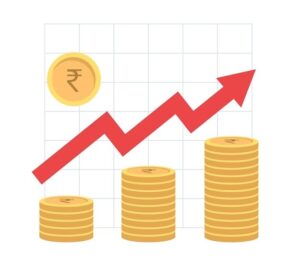What Is a Take-Profit Order in Stock Trading?
In the dynamic world of stock trading, a take-profit order stands as a powerful tool that traders utilize to optimize their profits and manage their risks. This order type offers a strategic approach to securing gains by automatically triggering a sale of security once it reaches a predefined level of profit. This article explores the concept of a take-profit order, its benefits, its working mechanism, and considerations for traders.
Key Takeaways
Before delving into the intricacies of take-profit orders, let’s establish some key takeaways:
- A take-profit order is an instruction to sell a security when it reaches a specified profit level.
- It provides a strategic approach to securing gains while minimizing risk.
- Take-profit orders are especially valuable for short-term traders aiming to capitalize on quick market fluctuations.
- They help traders avoid emotional decision-making in the heat of the moment.
Definition and Example of a Take-Profit Order
A take-profit order is a trader’s tool designed to optimize profits by setting a predetermined price above the purchase price. Once the security’s price reaches this threshold, the order is automatically executed, resulting in a sale and locking in a profit. Conversely, if the price fails to reach this level, the order remains inactive.
This tool is particularly useful for day traders who seek to capitalize on rapid market movements to generate immediate profits. A take-profit order can be viewed as a specialized type of limit order, aimed at securing profits by triggering a sale at a favorable price.
How Does a Take-Profit Order Work?
A take-profit order operates as follows:
- A trader sets a profit target price above the purchase price.
- When the security’s market price reaches or surpasses the profit target, the order is automatically executed.
- The trader secures gains from the sale.
For instance, suppose a day trader buys 1,000 shares of a stock at $5.25 per share. Anticipating a market upswing, the trader sets a take-profit order with a profit target of $8.50 per share. Once the stock price hits or exceeds $8.50, the order triggers a sale, resulting in a profit.
Benefits and Considerations
Benefits of Take-Profit Orders:
- Profit Maximization: Traders can lock in profits by automatically selling at predetermined levels.
- Risk Minimization: These orders minimize risk by ensuring that gains are secured.
- Eliminating Emotion: Traders avoid emotional decisions in the heat of trading moments.
Considerations for Traders:
- Execution Time: The execution of a take-profit order depends on market conditions.
- Trade Strategy: Take-profit orders are best suited for short-term trading strategies.
- Market Analysis: A thorough analysis of security value and market trends informs the establishment of a take-profit level.
Pros and Cons of Take-Profit Orders
As with any trading strategy, take-profit orders come with their set of pros and cons:
Pros of Take-Profit Orders:
- Profit Assurance: Orders ensure a minimum level of profit when executed.
- Risk Mitigation: Traders minimize the potential for losses.
- Eliminating Doubt: No need for second-guessing or on-the-spot decisions.
Cons of Take-Profit Orders:
- Limited Long-Term Strategy: Not suitable for long-term traders seeking larger gains.
- Trend Limitations: These orders might lead to early exits, missing out on extended trends.
- Execution Uncertainty: Orders might not execute if the set profit target is not reached.
Conclusion
In the world of stock trading, where swift market movements can make or break a trade, a take-profit order emerges as an invaluable tool. By setting predefined profit levels, traders can secure gains and manage risk effectively. This strategy is particularly favored by short-term traders seeking to capitalize on rapid market fluctuations. However, it’s essential for traders to assess their individual goals, risk tolerance, and trading strategy to determine whether take-profit orders align with their overall approach.
Access Now: Paytm Money opens your Demat Account for free
Frequently Asked Questions (FAQs)
Q: How can I determine an appropriate take-profit level?
A: Determining a suitable take-profit level involves technical analysis of the security’s value and market trends. Strategies may include using indicators like the average true range, pivot points, or chart pattern analysis.
Q: Are take-profit orders suitable for long-term traders?
A: Take-profit orders are primarily tailored to short-term traders aiming for quick gains. Long-term traders seeking to capitalize on extended trends might find these orders limiting.
Q: What is the advantage of using a take-profit order?
A: Take-profit orders offer the advantage of securing profits automatically, minimizing the risk of losing gains due to emotional decisions or market fluctuations.











